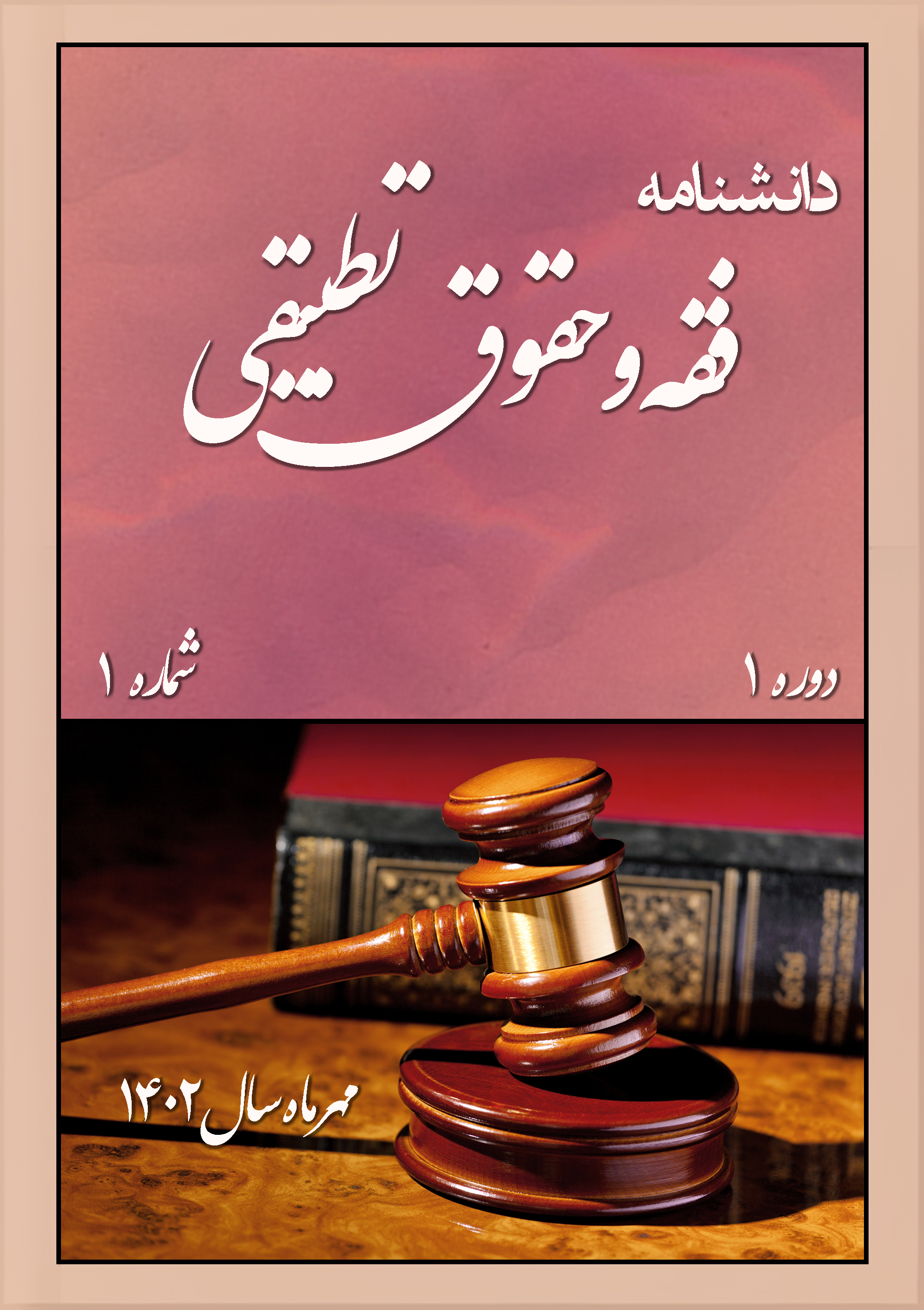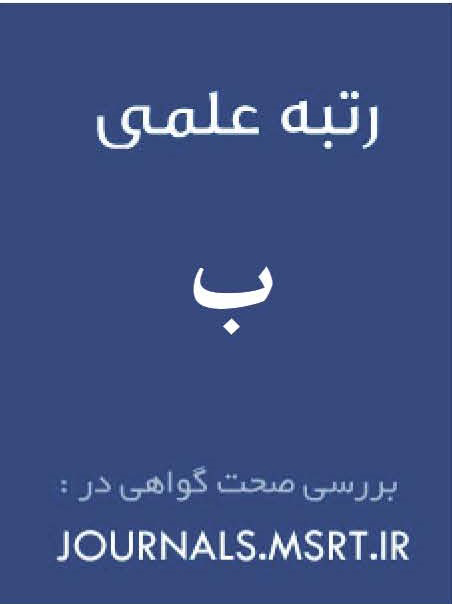مسئولیت مدنی والدین در قبال اختلالات جنین در نظام حقوقی ایران و آمریکا
کلمات کلیدی:
اختلالات جنین, تقصیر, حقوق ایالات متحده, حقوق ایران, حمایت از حقوق جنین, مسئولیت والدینچکیده
هدف این مقاله بررسی مسئولیت والدین در قبال اختلالات جنین با رویکردی تطبیقی در نظامهای حقوقی ایران و ایالات متحده آمریکا است. دوران جنینی به عنوان حساسترین و مهمترین مرحله در شکلگیری جسم و روان انسان، اهمیت ویژهای در این بحث دارد. نقش والدین در این زمینه از طریق اقداماتی همچون مشاوره ژنتیک، ارائه سوابق ژنتیکی، و مراقبتهای دوران بارداری ایفا میشود. امروزه نه تنها عرف پزشکی، بلکه عرف عمومی نیز بر ضرورت این اقدامات تأکید کرده و والدینی که در انجام این وظایف کوتاهی کنند را مسئول میدانند. این پژوهش با روش توصیفی-تحلیلی انجام شده و به این نتیجه رسیده است که تقصیر والدین در صورت به خطر انداختن سلامت جنین و ایجاد اختلالات، بیماریها یا معلولیتها، موجب مسئولیت آنها در جبران خسارت وارده به جنین خواهد بود. همچنین پیشنهاد شده است که با توجه به اهمیت دوران جنینی و ناتوانی جنین در تصمیمگیری درباره سلامت خود، قانونگذار باید قوانین حمایتی ویژهای برای حفظ حقوق جنین وضع کند. در نهایت، با الهام از نظام حقوقی آمریکا، پیشنهاد میشود که در نظام حقوقی ایران نیز والدینی که از روشهای لقاح آزمایشگاهی استفاده میکنند و از خطر انتقال ناهنجاریهای ژنتیکی کشنده یا جدی به فرزند خود آگاه هستند، ملزم به استفاده از روشهای پیشگیرانه مانند لانهگزینی شوند
دانلودها
مراجع
al-Hurr al-Amili, M. i. a.-H. (1989). Tafsil Wasa’il al-Shi’a ila Tahsil Masa’il al-Shari'ah. Al al-Bayt Institute.
al-Kulayni, A. J. f. M. i. Y. q. (1987). Al-Kafi. Dar al-Kutub al-Islamiyyah.
al-Muhaqqiq al-Thani al-Amili, A. i. a.-H. a.-K. (1995). Jami’ al-Maqasid fi Sharh al-Qawa’id (Vol. 9). Al al-Bayt Institute.
al-Shahid al-Thani, Z. a.-D. i. A. a.-A. (1990). Al-Rawdah al-Bahiyyah fi Sharh al-Lam’ah al-Dimashqiyyah. Davari Bookstore.
al-Shahid al-Thani, Z. a.-D. i. A. a.-A. (1993). Masalik al-Afham ila Tanqih Sharayi’ al-Islam (Vol. 1). Institute of Islamic Knowledge.
al-Tabarsi, H. i. F. (1976). Makarem al-Akhlaq. Farahani Publications.
al-Turayhi, F. a.-D. (1996). Majma’ al-Bahrayn (Vol. 5). Mortazavi Bookstore.
al-Tusi, A. J. f. M. i. a.-H. (2008). Al-Mabsut fi Fiqh al-Imamiyyah (Vol. 4). Al-Maktabah al-Murtazawiyyah.
Amini, A. (2003). Medicine Before Birth. Tayyeb Publications.
Azimzadeh Ardabili, F., Mohaqqeq Damad, M. a.-S., & Hasheminejad, N. (2024). The Jurisprudential, Legal, and Ethical Common Criterion Between Destruction of Frozen Embryo and Abortion. Fiqh and Family Law, 29(80), 105-135.
Bahiraei, A. (2007). Prenatal Care (et al. ed.). Mersa Publications.
Berk, L. E. (2007). Developmental Psychology: From Conception Through Childhood. Arasbaran Publishing.
Buchanan, A., Brock, D. W., Daniels, N., & Winkle, D. (2012). From Chance to Choice: Genetics and Justice. Cambridge University Press.
Collins, E. F. (1983). An Overview and Analysis: Prenatal Torts, Preconception Torts, Wrongful Life, Wrongful Birth and Wrongful Death: Time for a New Framework. Journal of Family Law, 22, 677-711.
Davis, D. (1997). Genetic dilemmas and the child's right to an open future. Hastings Center Report, 27(2), 7-15. https://doi.org/10.2307/3527620
Davis, D. (2001). Genetic dilemmas: Reproductive technology, parental choices, and children's futures. Routledge.
Detrick, S. (2023). A Commentary on the United Nations Convention on the Rights of the Child. Brill, Nijhoff.
Emami, H. (1987). Civil Law (Vol. 1). Eslamiyeh Bookstore.
Feinberg, J. (1980). The child's right to an open future. In W. H. Aiken & T. LaFollette (Eds.), Children's Rights, Parental Authority, and State Power (pp. chapter 6). Littlefield.
Goodwin, M. (2010). A view from the cradle: Tort law and the private regulation of assisted reproduction. Emory law Journal, 59, 1039-1100. https://doi.org/10.2139/ssrn.1724920
Griffin, J. (1986). Well-being: Its meaning, measurement, and moral importance. Oxford University Press.
Hekmatnia, M. (2007). Civil Liability in Imamiyyah Jurisprudence. Research Institute of Islamic Sciences and Culture.
Ibn Idris al-Hilli, M. i. M. i. A. (1990). Al-Sarair al-Hawi li-Tahrir al-Fatawa (Vol. 3). Islamic Publications Office.
Ibn Manzur, A. a.-F. J. a.-D. M. i. M. (1994). Lisan al-Arab (Vol. 13). Dar al-Fikr.
James, D., Steer, P., Weiner, C., Gonik, B., & Robson, S. (2017). High-Risk Pregnancy: Management Options. Cambridge University Press. https://doi.org/10.1017/9781108664677
Jawhari, I. i. H. (1990). Al-Sihah: Taj al-Lugha wa Sihah al-Arabiya (Vol. 4). Dar al-Ilm lil-Malayin.
Katouzian, A. N. (2008). Family Law. University of Tehran Press.
Kigotho, W. (2006). Facing Financial Difficulties, African Virtual U. Revamps Itself. Chronicle of Higher Education, 53(7), 1-44.
Lankarani, M. F. M. (1988). Al-Qawa'id al-Fiqhiyyah. Mehr Press.
Mir Mohammadi, S. M. H. (2015). An Introduction to Ronald Dworkin's Theory of Justice. Elmī va Farhangī Publications.
Molaei, M. (2022). A Jurisprudential and Legal Analysis of Fetal Legal Capacity in Iranian and U.S. Legal Systems. Fiqh and Family Law, 27(76), 263-292.
Morshed Selouki, M. (1990). The Physician and Divine Responsibility. Kalameh Publications.
Najafi, S. M. H. (2013). Jawahir al-Kalam fi Sharh Sharayi' al-Islam (Vol. 10). Dar al-Kutub al-Islamiyyah.
Papalia, D., Sally, O., & Feldman, R. (2009). Human Development. McGraw-Hill.
Parfit, D. (1984). Reasons and Persons. Oxford University Press.
Rawls, J. (2024). A Theory of Justice. Markaz Publications.
Safa'i, S. H. (2016). Parental Civil Liability Toward the Fetus. University of Tehran Press.
Sahib ibn 'Abbad. (1993). Al-Muhit fi al-Lughah (Vol. 6). Alam al-Kitab.
Savulescu, J., & Kahane, G. (2009). The moral obligation to create children with the best chance of the best life. Bioethics, 23(5), 274-290. https://doi.org/10.1111/j.1467-8519.2008.00687.x
Trotzig, M. A. (1980). The Defective Child and the Actions for Wrongful Life and Wrongful Birth. Family Law Quarterly, 14(1), 15-40. https://doi.org/10.1080/01947648009513322
Zakariya, A. a.-H. (1995). Mu’jam Maqayis al-Lughah (Vol. 1–2). Islamic Propagation Office Publications.
دانلود
چاپ شده
ارسال
بازنگری
پذیرش
شماره
نوع مقاله
مجوز
حق نشر 2025 راضیه عبدالصمدی; امیر حسین حبیباللهیان (نویسنده)

این پروژه تحت مجوز بین المللی Creative Commons Attribution-NonCommercial 4.0 می باشد.









